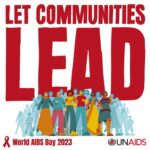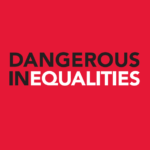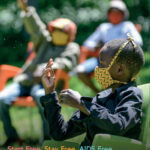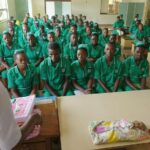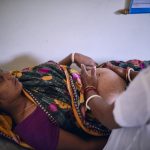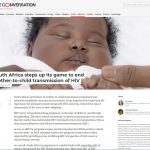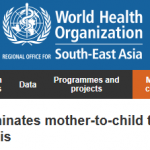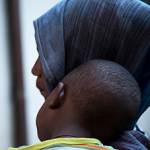Preventing mother-to-child HIV transmission is crucial to achieving an HIV-free generation and ending the global inequities in HIV diagnosis, treatment, and care.
Early HIV diagnosis, paired with treatment and care, allows people to live long, healthy lives and reduces the likelihood of their transmitting the virus to others. Vertical transmission, or mother-to-child transmission, of HIV is the leading cause of infection among children under 15. Globally, nearly 1.5 million deaths and 2.9 million new HIV infections have been averted since 2000 as a result of the scale-up of programs to prevent mother-to-child-transmission of HIV. In 2021, 81 percent of pregnant women living with HIV had access to antiretroviral medication. While mother-to-child transmission of HIV has been nearly eliminated from high-income countries, progress has been slower in low- and middle-income countries. In sub-Saharan Africa, women and girls accounted for 63 percent of all new HIV infections in 2021, increasing the risk of transmission to their newborns. More work needs to be done to prevent HIV among women, girls, and children and close the gaps to achieve the global targets of 95-95-95 by 2025; 95 percent of people living with HIV know their HIV status, 95 percent of people who know their status are on antiretroviral treatment, and 95 percent of people on HIV treatment have a suppressed viral load, reducing the risk of transmission.
54
percent of children in need who receive life-saving treatment for HIV
63
percent of infants exposed to HIV tested within two months of birth
2
percentage point increase in ART coverage for pregnant women living with HIV from 2016 to 2020; this rate has stalled compared to the 38-percentage point increase in coverage from 2010-2015.
All data on this page represents the most recent data available, unless otherwise noted. Please visit our Newborn Numbers page and download the Excel spreadsheet to explore the data further.
HIV Transmission
Newborns can be infected with HIV by their mothers in a few ways, requiring a comprehensive, multi-level preventative approach. An HIV-positive mother can transmit HIV to her child during pregnancy, childbirth, or breastfeeding. Between 15 and 45 percent of infants born to HIV-positive women will become infected, if no preventative action is taken. Antiretroviral therapy (ART) can significantly reduce the risk of vertical transmission, as it decreases viral levels and makes it less transmittable. All pregnant women should be tested for HIV at their first antenatal visit, especially those in HIV-endemic regions, and all pregnant women living with HIV should be supported to initiate or continue ART during pregnancy. All children born to HIV-positive mothers should receive preventative antiretroviral drugs, with regular testing at two months and after the cessation of breastfeeding.
Major strides have been made to reduce the risk of mother-to-child transmission of HIV through global prioritization and commitments. A global multi-partner effort has decreased the rate of transmission in children by 53 percent since 2010. However, the COVID-19 pandemic led to noticeable declines in ART coverage among pregnant and breastfeeding women. Approximately 800,000 children under 15 years of age are not on treatment, and the majority of global childhood infections, 4 out of 5, occurred in sub-Saharan Africa in 2021. With the launch of the new Global AIDS Strategy in 2021 came an increased commitment to achieving the 2025 target of 95 percent coverage of services for eliminating mother-to-child transmission. The Global Alliance to End AIDS in Children, launched in 2022, will support these efforts through four pillars:
- Early testing and optimized comprehensive, high-quality treatment and care for infants, children, and adolescents living with and exposed to HIV
- Closing the treatment gap for pregnant women living with HIV and optimizing continuity of treatment towards the goal of elimination of mother-to-child transmission
- Preventing and detecting new HIV infections among pregnant and breastfeeding adolescents and women
- Addressing rights, gender equality, and the social and structural barriers that hinder access to services
Key resources
- Prevention of Vertical Transmission, Children and AIDS Unicef (2022)
- WHO updated clinical and service delivery recommendations for HIV prevention, treatment and care (2021)
- Global AIDS Strategy 2021–2026: End Inequalities, End AIDS (2021)
- 20 Years of Progress to Protect Mothers and Babies From HIV (2021)
- Final report from the Start Free, Stay Free, AIDS Free initiative (2021)
- We’ve got the power — Women, adolescent girls and the HIV response (2020)
- Prevailing against pandemics by putting people at the centre — World AIDS Day report (2020)
- PMTCT in Humanitarian Settings Part I: Lessons Learned and Recommendations (2015)
- PMTCT in Humanitarian Settings: Part II Implementation Guide (2015)
